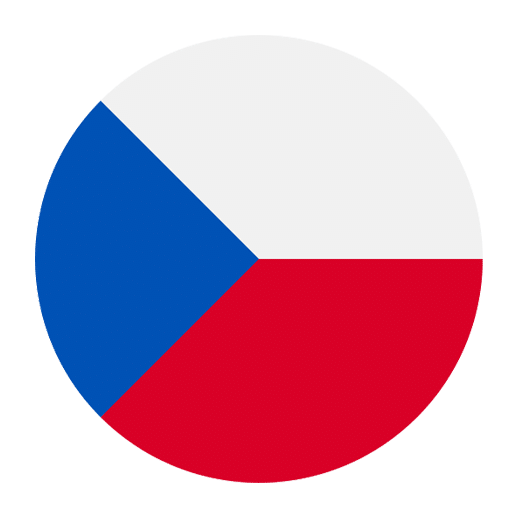Learning a new language can be a thrilling yet challenging experience, especially when you encounter words that sound similar but have entirely different meanings. In the Czech language, two such words are “koleno” and “kolem.” Although they might seem similar at first glance, their meanings and uses are quite distinct. This article aims to clarify the differences between these two words, helping you to avoid common pitfalls and enhance your Czech vocabulary.
Koleno: The Knee
The word “koleno” in Czech refers to the human knee. Understanding how to use this word correctly is essential, especially if you ever find yourself in a situation where you need to talk about body parts, injuries, or even certain idiomatic expressions.
Basic Anatomy
First and foremost, “koleno” is a noun that belongs to the neuter gender in Czech. Here are its basic forms:
– Nominative (subject): koleno
– Genitive (possession): kolena
– Dative (indirect object): kolenu
– Accusative (direct object): koleno
– Vocative (addressing): koleno
– Locative (location): koleně
– Instrumental (means): kolenem
For example:
– “Moje koleno bolí.” (My knee hurts.)
– “Jdu k lékaři kvůli kolenu.” (I am going to the doctor because of my knee.)
Common Phrases and Idioms
The word “koleno” also appears in several common phrases and idioms:
– “Jít na kolena” (to go on one’s knees) – This can mean physically kneeling or showing submission.
– “Být na kolenou” (to be on one’s knees) – This idiom means to be defeated or in a desperate situation.
Kolem: Around
On the other hand, “kolem” is a preposition in Czech that translates to “around” or “by” in English. It is used to describe the proximity or movement around an object or area.
Spatial Context
“Kolem” is often used to describe movement or location relative to another object. Here are some common usages:
– “Jdu kolem parku.” (I am walking around the park.)
– “Projíždím kolem školy.” (I am driving by the school.)
When used in a spatial context, “kolem” helps provide a clearer picture of where something is happening or how someone is moving in relation to another object or place.
Temporal Context
Interestingly, “kolem” can also be used in a temporal context to mean “around” a certain time:
– “Přijdu kolem šesté hodiny.” (I will come around six o’clock.)
This usage helps to offer a more flexible time frame, allowing for some leeway in the exact timing of an event.
Comparison and Common Mistakes
Given that “koleno” and “kolem” sound somewhat similar, it’s easy to mix them up, especially for beginners. However, their meanings and uses are entirely different. Here are some tips to avoid common mistakes:
Pronunciation and Spelling
While “koleno” and “kolem” sound similar, paying attention to their endings can help differentiate them. “Koleno” ends with an “o,” while “kolem” ends with an “m.” Practicing these words out loud can help cement their differences in your memory.
Contextual Clues
Another way to avoid confusion is by paying close attention to the context in which these words are used. “Koleno” will usually appear in sentences related to body parts, health, or idiomatic expressions involving the knee. In contrast, “kolem” will generally be found in sentences describing movement, location, or time.
Practice Makes Perfect
One of the best ways to master these words is through practice. Try incorporating them into your daily conversations, or create sentences that use both words to better understand their differences. For example:
– “Běžím kolem domu, protože mě bolí koleno.” (I am running around the house because my knee hurts.)
Exercises for Mastery
To ensure that you have a firm grasp of “koleno” and “kolem,” here are some exercises you can try:
Fill-in-the-Blanks
1. Moje ______ bolí, musím jít k doktorovi.
2. Procházíme se ______ parku, je to krásné místo.
3. Jdu ______ šesté hodiny, počkáš na mě?
4. Mám zraněné ______, nemůžu běhat.
5. Včera jsme jeli ______ města a viděli jsme nové obchody.
Translation Practice
Translate the following sentences into Czech:
1. My knee hurts, I need to see a doctor.
2. We are walking around the park, it’s a beautiful place.
3. I will come around six o’clock, will you wait for me?
4. I have an injured knee, I can’t run.
5. Yesterday, we drove around the city and saw new shops.
Role-Playing Scenarios
1. Imagine you are at a doctor’s office. Explain to the doctor that your knee hurts and describe the pain.
2. Plan a day out with a friend, mentioning different activities you will do around the city and the approximate times.
Conclusion
Understanding the difference between “koleno” and “kolem” is crucial for mastering the Czech language. While they may sound similar, their meanings and uses are entirely distinct. “Koleno” refers to the knee and is used in contexts related to body parts and health, while “kolem” means around or by and is used to describe spatial and temporal relationships.
By paying attention to pronunciation, context, and practicing regularly, you can avoid common mistakes and become more confident in your Czech language skills. Remember, every new word you learn brings you one step closer to fluency. Happy learning!

